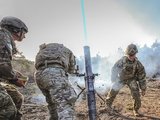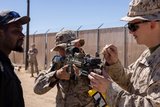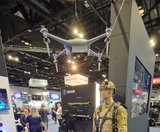Cubic tailors mortar simulator for the US Army
The company’s mortar trainer received improvements based on soldier’s feedback.
The New Zealand Defence Force (NZDF) played a leading role in an exercise during the Rim of the Pacific (RIMPAC) 2016, commanding Coalition Task Force 176, it announced on 1 August.
Coalition Task Force 176 consisted of an amphibious force of aircraft, personnel and ships. RIMPAC culminated in an amphibious landing exercise in Hawaii, involving assault amphibious vehicles backed by AH-1W Cobra twin-engine attack helicopters and FA-18 Hornet aircraft.
The task force was supported by the Provisional Marine Expeditionary Brigade-Hawaii and Amphibious Squadron, which included more than 2,500 personnel from New Zealand, Australia, Indonesia, Japan, Malaysia, South Korea and the US.
NZDF led the command team of the amphibious force, which also consisted of personnel from Australia, Chile, Colombia, South Korea and the US.
The goal of the exercise was to form relationships that would benefit future international exercises and real-world operations, and to better understand how to build a stronger force within a multi-national environment to respond to real-world security threats.
Maj Gen Tim Gall, the Commander Joint Forces New Zealand, said: 'Major international exercises like RIMPAC are valuable because they provide essential training for our military personnel that helps improve their readiness for a range of operations. Taking part in these exercises also strengthens defence co-operation with other countries and enhances our ability to work with them.
'This year we were also very fortunate to be given a major command role, which enabled us to develop our command and control skills in a conventional war-fighting environment.'
The next RIMPAC exercise will take place in 2018.

The company’s mortar trainer received improvements based on soldier’s feedback.

The company will operate in two new locations in the coming years to better support US services.

This type of tool provides more realistic training easing the incorporation of new scenarios that accurately represent the threats of the battlefield.

The Engineering Corps has been conducting individual instruction using FLAIM Systems’ Sweeper and should start collective deployments in 2025.

The next-generation platform is motion-compatible and can be used in OTW and NVG applications.

The system can be used to prepare soldiers for both drone offensive operations and CUAS missions.